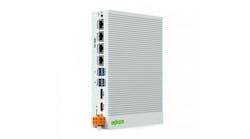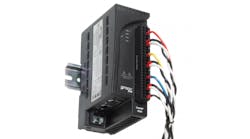Will a smart approach to cannabis change traditional farming?
By Chris Treville, managing director at GrowEx
Controlled-atmosphere (CA) technology is applied in indoor cultivation spaces where plants grow in a "bubble-like" environment. Not an airtight environment, but a more-efficient, gas-tight environment that serves as the first line of defense against contamination.
We use this technology for "quality hold," meaning that we can extend the storage of biomass beyond the capabilities of normal cooling (refrigeration). For example, we can hold supermarket quality in some fruit for up to 14 months, something that can also be done with a good crop of cannabis biomass that has valuable terpenes. The controlled atmosphere can also kill insects and their eggs without using pesticides or chemicals. We can also increase the efficiency of the dry/cure process for cannabis.
GrowEx's By Chris Treville
Precise digital control of air molecules means controlling the air down to two decimal points in terms of percentages of CO2, O2, N2, ethylene and ethanol, the gases that exist around large amounts of biomass. The concentrations of these gases influence the quality, quantity (yield) and energy efficiency of equipment, notably temperature and humidity.
Creating a gas-tight environment on a large-scale facility requires attention to design and detail in the walls, ceilings, and doors, but also in the equipment that circulates air. This industrial-caliber system controls the temperature and humidity in the cultivation center, enabling a level of control to capture humidity, condense it, filter it, and recycle it back into irrigation.
Plants usually absorb only about 3% of the water that is given to them; the other 97% gets evaporated. This is why a gas-tight, controlled-atmosphere cultivation room can up 20 times less water compared to a greenhouse or conventional indoor grow that allows humid, water-filled air to leak outside. CA cultivation is key to producing the same plants, harvest-after-harvest, within a margin of error acceptable to pharmaceutical-grade requirements. It is also key to creating a solution that increases yield and productivity per-square-foot while reducing operational cost.
This is what is missing in the indoor-cultivation world. Eventually, we will find that sweet spot where the capital expense to build gas-tight CA cultivation facilities combines with high productivity per-square-foot, high-quality product, and low operational costs. Once that happens, traditional farming will be a thing of the past. And we’d better hurry, because of increasing water shortages and the fact that some parts of the world are suffering from over-farming.
In the cannabis industry, there is a lot of money circulating around from investors wanting to participate. The companies that are using this money to push the research and development to figure out that sweet spot of profitability, quality and efficiency will be the leaders in indoor cultivation. Those first steps with cannabis just might propel this movement toward efficient indoor cultivation of all crops.



